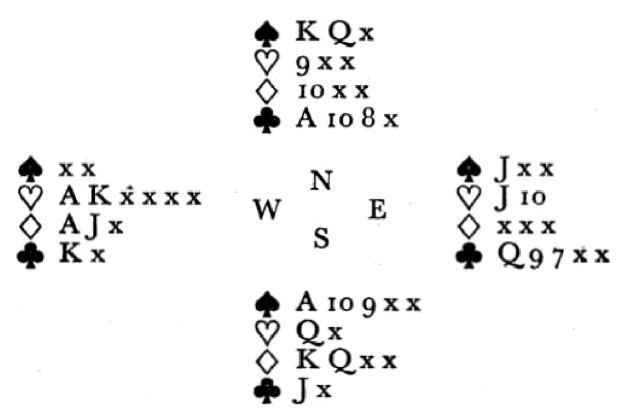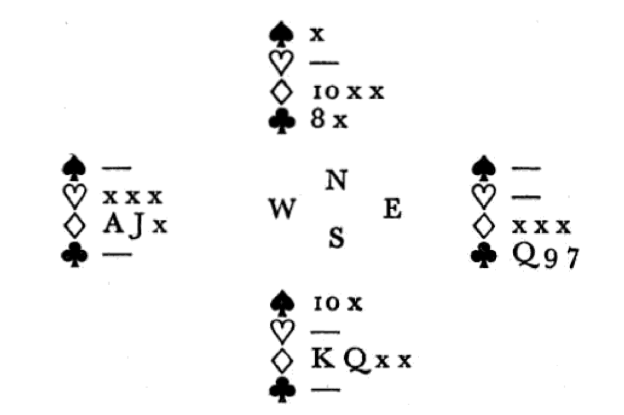 The phobia about conceding a ruff and discard is so prevalent, and so seldom referred to in Bridge literature, that an example is worth giving which shows a hand defeated only if this “crime” is committed twice:
The phobia about conceding a ruff and discard is so prevalent, and so seldom referred to in Bridge literature, that an example is worth giving which shows a hand defeated only if this “crime” is committed twice:
 After some keen match-point bidding, South became declarer at Three Spades.
The defenders started with three rounds of Hearts, East trumping the third round and South overtrumping.
The trumps were drawn in two rounds and then declarer led a small Club; West played low and declarer, thinking it likely that West was short in Clubs, made the clever play of winning with dummy’s Ace and returning a Club. This was the position:
After some keen match-point bidding, South became declarer at Three Spades.
The defenders started with three rounds of Hearts, East trumping the third round and South overtrumping.
The trumps were drawn in two rounds and then declarer led a small Club; West played low and declarer, thinking it likely that West was short in Clubs, made the clever play of winning with dummy’s Ace and returning a Club. This was the position:  As he saw that a Heart would allow a ruff and discard, West led a small Diamond; the 10 won and another Diamond was led, establishing the suit; so declarer lost only one more trick. Study the effect of a Heart lead by West. If dummy trumps, West allows
As he saw that a Heart would allow a ruff and discard, West led a small Diamond; the 10 won and another Diamond was led, establishing the suit; so declarer lost only one more trick. Study the effect of a Heart lead by West. If dummy trumps, West allows Don’t forget to follow us @




























